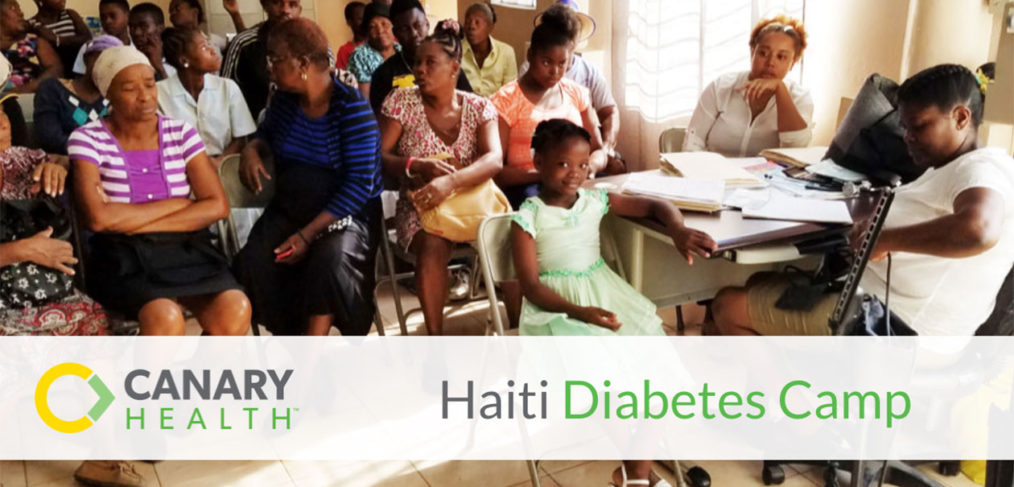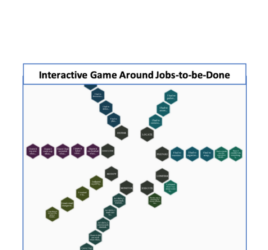
Haiti Diabetes Camp
Our CMO, Neal Kaufman, recently visited diabetes clinics across Haiti – read his story below.
We landed in Port au Prince, Haiti from Atlanta and the minute we stepped off the plane, we entered Haitian time – a separate time zone where everyone is late, everything takes longer, and anything you do is harder than you imagined.
The familiar streets we traveled from the airport to the same hotel we have stayed at for 7 years seemed slightly cleaner, with more rebuilding, but with no less congestion and chaos. We rode past one tent city (it was smaller than before), mounds of trash, stray goats, pigs, chickens, and a man barbecuing a cat. Arrays of every imaginable item that could be sold – tires, wood, shoes, clothes, beds, food, medications –were strewn on the sidewalks, streets, trees and ready for bartering. There were people everywhere – school girls with ribbons and uniforms, naked toddlers and preschoolers (seemingly without close supervision), women balancing baskets of food and empty plastic bottles on their heads, and men trying to find work. There was the usual frenzy due to stalled vehicles and jammed traffic. At every corner there was the perennial game of chicken – fortunately with our big SUV and bodyguard, we seemed to be winning.
We were picked up by Dr. Rene Charles, the 88 year-old father of not only endocrinology in Haiti, but also of Dr. Nancy Charles Larco – our host and the head of FHADIMAC (the Haitian Diabetes Association). Dr. Rene was a bit slower, but no less determined, and more interested in our new president than his (they have a new president for the last few weeks, and no one seems to know how he will do). We met up with Nancy and Evelyne Fleury-Milfort – our American Haitian diabetes nurse practitioner friend who is always with us in Haiti. And then we began. We lectured, worked in the diabetes clinic to teach Nancy’s new staff doctor, and attended the posh-for-Haiti 30th anniversary of FHADIMAC. The wide variety of Haitian dignitaries and politicians, many of whom we have met in the past, all admitted that FHADIMAC is crucial to the health of Haiti – where 7% of people (twice as many women and men) have type 2 diabetes (despite ongoing, serious food insecurity) and 2,000,000 people have hypertension, most with metabolic syndrome and many with pre-diabetes.

In clinic, we were overwhelmed yet again by the issues the children with diabetes face. Almost all are still on premixed insulin – something we haven’t used for children with type 1 in the US since the early 1980s – mainly because it doesn’t allow for insulin dose adjustment or optimal glucose control. It works here because, for the most part, the kids in Haiti don’t adjust their insulin doses – many are too food insecure and don’t know when or what their next meal will be (often they don’t eat lunch, even when they are in school); they face stigma by having diabetes and won’t check or inject in front of others; they don’t have enough strips and aren’t able to test more; and they are simply overwhelmed by life. And besides that, premix is the cheapest and therefore the easiest insulin for them to get through the insulin donation programs (Life for a Child and Insulin for Life).
We saw an 18-year emaciated, despondent boy – we mean skin and bones – who came to clinic with a glucose too high to read in the meter (>600 mg/dL). He was diagnosed over a year ago after he collapsed on a street in Port au Prince, and was placed – comatose – on a motorcycle to rush him to the hospital. Unfortunately, his right let hung over the muffler during the ride, and he suffered a severe burn with resultant muscle and nerve loss so that he can barely walk. He can’t work, he can’t go to school, and he can’t afford physical therapy or rehabilitation (his diabetes care is free thanks to Nancy and Life for a Child). He told us his mother died from her diabetes (he never met his father) and he lives with his elderly grandfather. They often don’t have food so he doesn’t take most of his insulin injections – and as a result, his sugar levels are sky-high. Nancy’s team is trying to find ways to help him, but he is just one of the many children who live in this country that has so little to offer its people.
We saw a 2 year old busy, playful toddler with diabetes who had a severe low glucose in the middle of the night. His mother is now terrified and gives him milk 2-3 times while he sleeps and food – without insulin for it – all day long. A 13 year old boy came by himself to clinic – he does most of his diabetes management himself and hates testing his blood sugar – so he never does. A 12 year old girl wasn’t growing because her diabetes was so poorly controlled and another teen had just been hospitalized with diabetic ketoacidosis – a potentially life-threatening condition. He seemed interested in doing more to control his sugars so that would never happen again. Interspersed were two success stories: a 10 year old girl – who had come to at least 3 of our last camps – had gotten her A1C test to 7.5% (a very good value for Haiti…and acceptable for the U.S.) and a young adult woman who was doing so well, we just sat and listened and smiled.
And then after a few days and a short plane ride in an 18 passenger propeller plane (our first in Haiti and likely our last), we went to camp in Cap Haitian in the north of Haiti. In Cap Haitian, while we were waiting for the campers to arrive – those who came on the bus from Port au Prince had an 8 hour journey – we went up the mountains that separate Haiti from the Dominican Republic to see the famous Haitian Castle and the Citadel – both constructed after the 1804 slave revolt that made Haiti the first independent nation run by former slaves. The Citadel was breathtaking- it was so massive it looked like a mountain itself. It was filled with cannons and cannon balls and built by the second Haitian leader after the revolt. It rivaled anything we had ever seen in size, scope, and disarray after earthquakes and pillaging.

Camp was in a resort inland – which by Haitian standards was plush but by ours almost tolerable. There were 61 kids in camp, 9 young leader counselors (all with type 1 and previous campers themselves), and 4 residents in pediatrics from the local Cap Haitian Hospital – along with us, Evelyne, everyone in Nancy’s family including Dr. Rene, most of her staff, and a host of her friends who came for support. Too many of the kids and counselors have chronic high blood sugars and as a result early health issues – big livers, stiff joints, puffy feet and eyes, changes in their skin, and poor growth. They lined up for seconds of goat stew and rice and bean puree -happy to overeat protein while they can (they certainly could have cared less that it was goat).
The campers spent half the time in classes to learn more about diabetes and the reasons it needs to be managed – and to dispel a host of myths (including a few questions that seemed to be rooted in voodoo), and the rest of the time jumping up and down in the pool (most can’t swim despite living on a tropical island), dancing, playing musical chairs (always a favorite), and being kids. For the annual talent night performances, many of the campers demonstrated extraordinary dancing abilities with a few of the younger kids (ages 8-10) performing PG-13 (if not R-rated) dance moves to the cheers of all the others. One group performed a parody of the all-to-common delay in their diabetes diagnosis when they were brought to a Voodoo “priest” to explain and eliminate their diabetes-related symptoms.
If you looked at them you wouldn’t know that too many of them have lost one or both parents, often go to bed hungry, miss lunch most days, have seen tragedy and violence, and have been kicked out of school because of diabetes Instead, they played and sang and danced and learned and joked as if they didn’t have a care in the world. And they go on – like Rita, a 25 year old counselor who has had diabetes for 15 years and despite her swollen liver and her marginal diabetes control – she is planning to get married. She told us, “My husband to be is a great guy who really loves me – and who will take me – diabetes and all. And a guy like him isn’t easy to find in a place like Haiti.”
Despite the fact that we feel there is only marginal progress in Haiti overall, and for children with diabetes in Haiti specifically, we are inspired by those who live here and survive Haitian time and the harsh reality of Haitian life – and for those children who can do it with diabetes.



